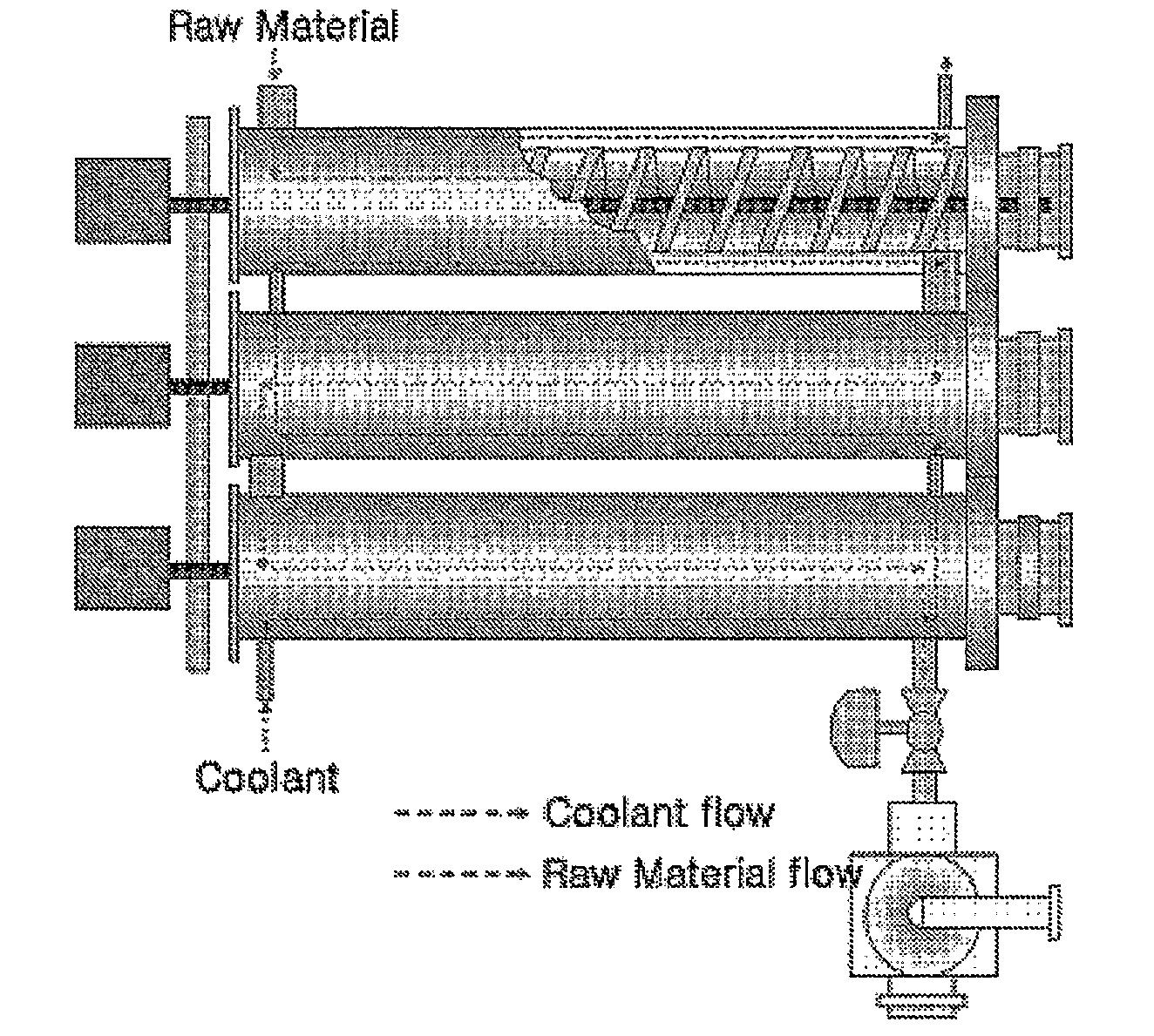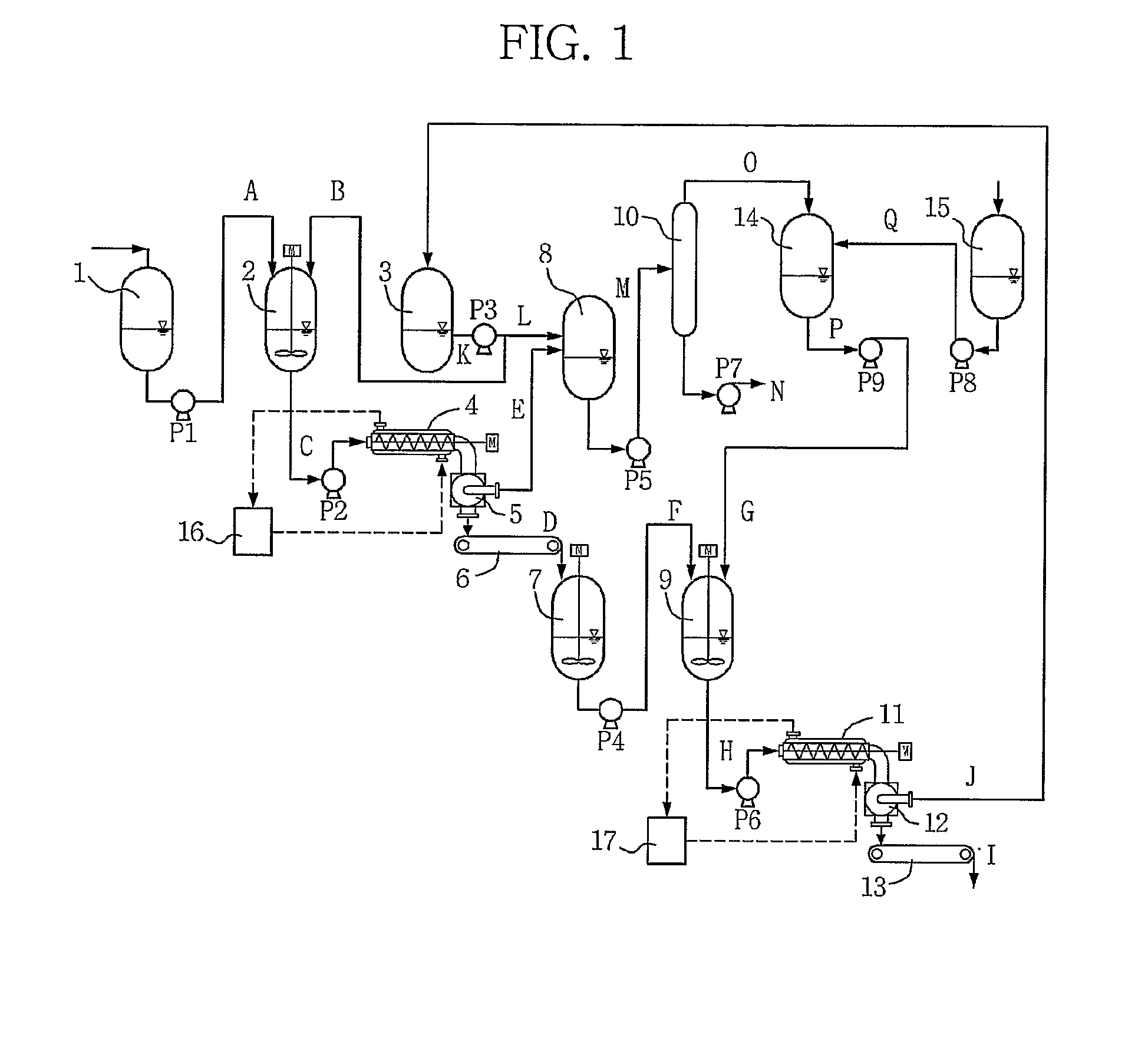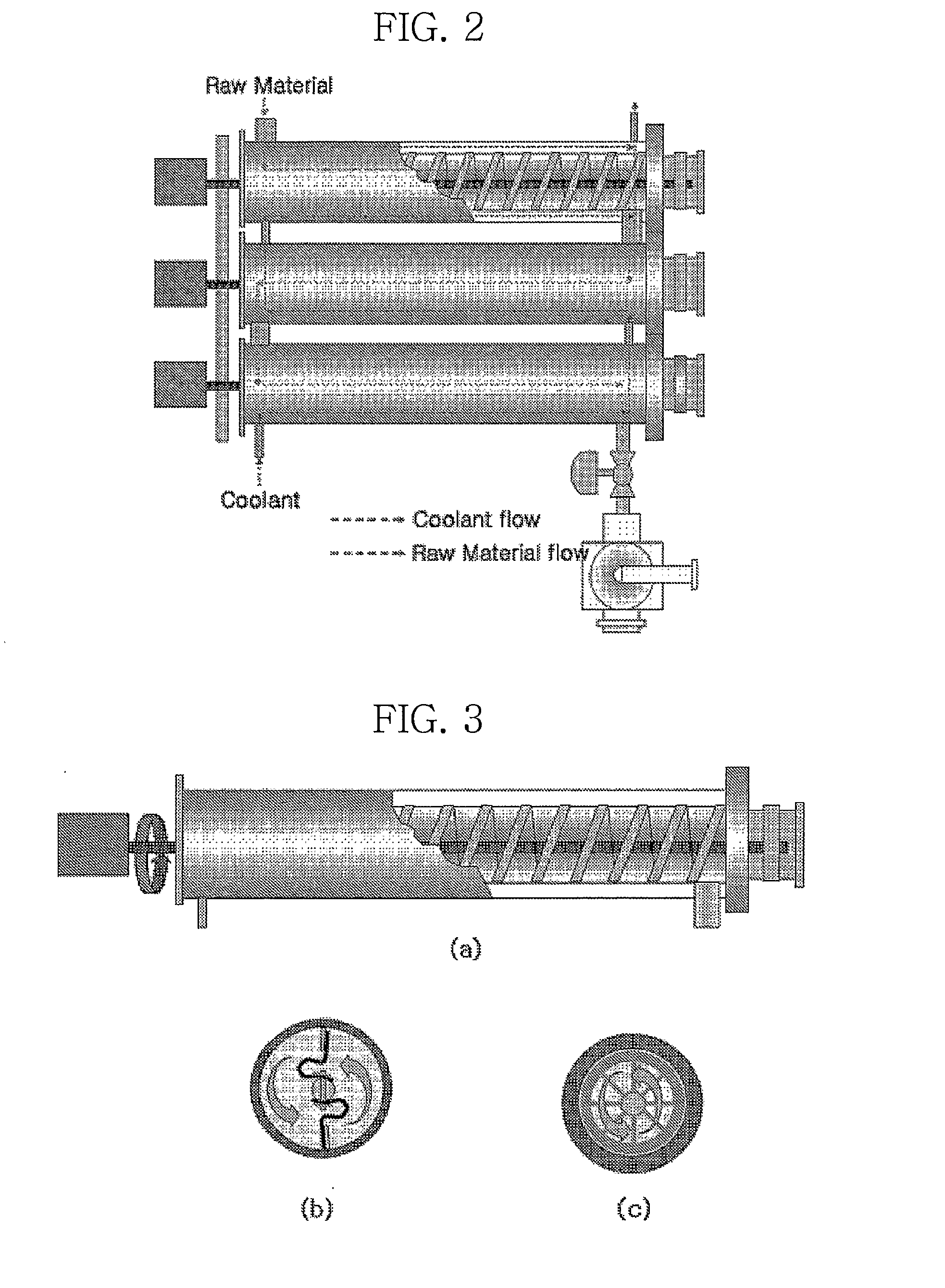Method and System for Separation and Purification of High-Purity 2,6-Dimethylnaphthalene by Continuous Crystallization
a technology of dimethylnaphthalene and high-purity 2,6dimethylnaphthalene, which is applied in the direction of crystallization separation, crystallization process, recrystallization, etc., can solve the problems of troublesome and time-consuming separation of 2,6-dimethylnaphthalene, deterioration of physical properties (e.g., purity, color, etc.,) of 2,6-naphthalenedicarboxylic acid,
- Summary
- Abstract
- Description
- Claims
- Application Information
AI Technical Summary
Benefits of technology
Problems solved by technology
Method used
Image
Examples
example 1
[0053]A reaction mixture of dimethylnaphthalenes containing an average of 42.53% by weight of 2,6-DMN was transferred at a rate of 15 kg / hr to the first solvent mixing tank. The reaction mixture was mixed with the stock solution separated in secondary crystallization, which was used for primary crystallization, until the average solvent ratio reached 4:1. The raw material mixture was introduced into and crystallized in the first crystallization apparatus. At this time, the temperature of the outlet port of the first crystallization apparatus was adjusted to 0° C. After the primary crystallization, centrifugation was performed to obtain crystals. The crystals were sampled and analyzed. The analytical results are shown in Table 2. The crystals were dissolved in the melting tank at 80° C. and transferred to the second solvent mixing tank. Ethanol was used to dissolve the crystals in a ratio of 8:1 in the second solvent mixing tank, and then the solution was transferred at a flow rate o...
example 2
[0054]To evaluate the influence of the structure of internal scrapers on crystallization, crystals were obtained in the same manner as in Example 1, except that scrapers having different structures were used. The average values of the obtained results are shown in Table 3.
TABLE 3DMN isomericUse of internalUse of internalmixturescraper (FIG. 3b)scraper (FIG. 3c)Purity (wt %)42.7899.2199.45Yield (%)100.085.988.9
PUM
| Property | Measurement | Unit |
|---|---|---|
| Temperature | aaaaa | aaaaa |
| Temperature | aaaaa | aaaaa |
| Temperature | aaaaa | aaaaa |
Abstract
Description
Claims
Application Information
 Login to View More
Login to View More - R&D
- Intellectual Property
- Life Sciences
- Materials
- Tech Scout
- Unparalleled Data Quality
- Higher Quality Content
- 60% Fewer Hallucinations
Browse by: Latest US Patents, China's latest patents, Technical Efficacy Thesaurus, Application Domain, Technology Topic, Popular Technical Reports.
© 2025 PatSnap. All rights reserved.Legal|Privacy policy|Modern Slavery Act Transparency Statement|Sitemap|About US| Contact US: help@patsnap.com



